Do you have a question about the Kikusui PCR4000LE and is the answer not in the manual?
Overviews of the manual's core sections covering operation, specs, and advanced features.
Guidelines for proper installation location, ventilation, and safe product movement.
Instructions for connecting the power cord to the PCR500LE, including safety checks.
Power cord connection details and cable specifications for PCR1000LE to PCR9000LE.
Steps to safely turn the unit on, including pre-checks and understanding the initial display.
How to turn the unit off and notes on how settings are retained after power cycles.
Instructions for wiring the load to the output terminal block, including wire preparation and safety.
Specific procedures for connecting loads to the PCR500LE front-panel outlets.
Steps for connecting load cables to the output terminal block for larger PCR-LE models.
Further information on connecting loads to front-panel outlets and associated current limits.
Identifies major components and sections of the PCR-LE Series front panel.
Identifies all connectors, slots, and ports located on the rear panel of the unit.
Instructions for detaching and reattaching the control panel for flexible usage.
Explains the display sections (Status, Entry, Function Key) and how function keys are documented.
Covers Home position, canceling settings, ENT wait state, and restoring factory defaults.
Methods for entering numerical values for settings using the front panel controls.
How to select between single-phase, three-wire, and two-phase output modes.
How to select the output voltage mode (AC, DC, or AC+DC) and its implications.
Step-by-step guide for selecting the desired output voltage mode.
How to select the voltage range (L or H) and its effect on current and voltage specifications.
How to set the specific AC, DC, or AC+DC output voltage value.
Detailed steps for setting AC and DC voltages using the front panel interface.
Procedures for setting AC and DC voltages, including phase differences, for single-phase, three-wire output.
How to set AC/DC voltages and phase differences in AC+DC mode.
Procedures for setting DC voltages using phase and line voltage options.
Steps for setting AC and DC voltages for three-phase output, including phase differences.
How to set the output frequency in AC and AC+DC modes.
How to control the output state, including safety warnings and power-on state configuration.
How to adjust aperture time to improve measurement stability and accuracy.
How to switch the voltage display between different modes like RMS, Peak, and Line voltage.
Overview of the product's limit functions and protection mechanisms like OVP, UVP, and Overload.
How to set voltage limits to prevent operations outside safe ranges.
How to set frequency limits to ensure operation within specified ranges.
How to set the current limit, positive peak, and negative peak current limits.
How to configure the unit's action (trip or control) when the current limit is exceeded.
How to set the time delay before the output turns off when the current limit is exceeded.
How input voltage drop and overheat protections function and trigger alarms.
How overload, UVP, and OVP protections activate and how to configure their settings.
How OCP protects internal components and setting the alarm time for OCP activation.
Step-by-step guide for saving settings like frequency, voltage, and waveform banks.
Step-by-step guide for loading saved settings from internal memory.
Procedure for saving internal memory, panel settings, simulations, and sequences to a USB drive.
Procedure for loading configurations and waveform banks from a USB drive.
How to set parameters for simulating power failures, voltage dips, and pops.
How to run and stop simulations, including status signal outputs and polarity settings.
How to run, pause, and stop sequences, including conditions that prevent execution.
Key input specifications including voltage, frequency, apparent power, and current ratings for the AC mode.
Detailed output specifications for AC mode, covering voltage, current, and power capacity.
Detailed output specifications for DC mode, including voltage, current, and power capacity.
Detailed output specifications for AC+DC mode, covering combined AC and DC parameters.
Table of factory default settings for all voltage/frequency limits and protection functions.
Procedures for returning all or specific settings to their factory default values.
Guidance for resolving alarms related to OHP, Overload, Current Limit trips, and Phase settings.
Steps for resolving issues where the output cannot be turned on or the load level meter is dimly lit.
Explains protection functions, alarms (ALM-xx), and trouble indications (TRBL-xx).
Detailed descriptions and corrective actions for various alarm codes like OVP, OCP, and UNIT FAIL.
| Rated Output Capacity | 4 kVA |
|---|---|
| Power Rating | 4000 VA |
| Input Frequency | 50 Hz / 60 Hz |
| Cooling Method | Forced air cooling |
| Output Power | 4000 W |
| Rated Output Voltage | Single Phase 100 V / 200 V |
| Output Voltage Range | 0 to 135 Vrms / 0 to 270 Vrms |
| Output Voltage | AC |
| Rated Output Current | 40 A / 20 A |
| Output Current Range | 0 to 40 A / 0 to 20 A |
| Load Regulation | 0.1% of F.S. |
| Line Regulation | ±0.1% |
| Ripple Voltage | 0.3 Vrms |
| Current Accuracy | ±0.2% of full scale |
| Ripple and Noise | 0.3 Vrms |
| Response Time | 1 ms |
| Operating Temperature Range | 0 to 40 °C |
| Storage Temperature Range | -10 to 70 °C |
| Input Voltage | 200 V to 240 V AC |
| Efficiency | 85% |
| Dimensions | 430 mm (W) x 221 mm (H) x 550 mm (D) |
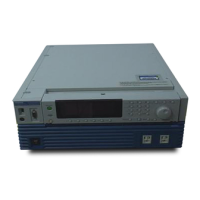
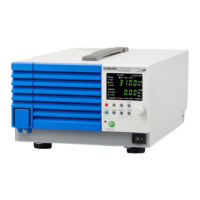


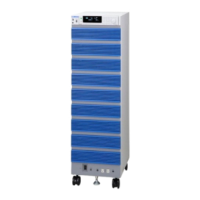
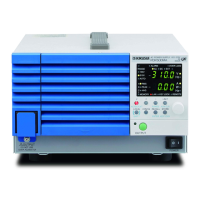

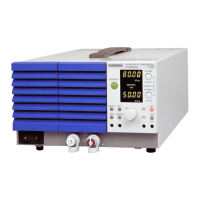



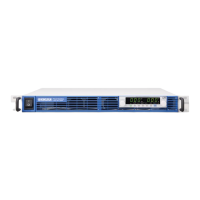
